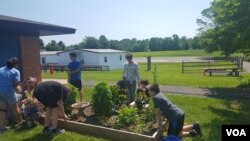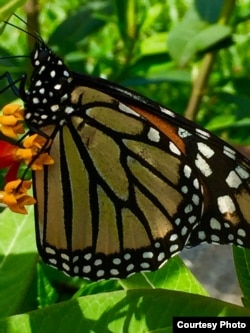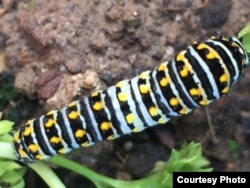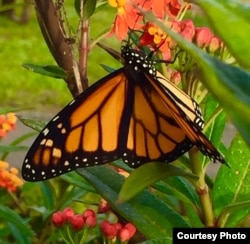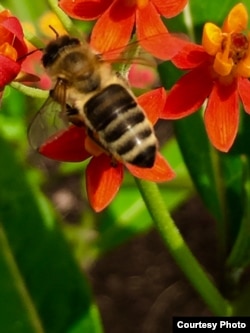P.B. Smith Elementary School in Warrenton, Virginia, is one of a growing number of schools around the United States that have vegetable gardens. Teaching children about gardening gives them a chance to get hands-on experience with growing and eating vegetables, learning about nutrition and nature in the process. Last year, this school’s beautiful, well-kept green space got a valuable addition — a garden filled with plants that attract butterflies.
Learning about butterflies
In class, members of the P.B. Smith Elementary School’s ecology club learn about butterflies — monarch butterflies, in particular. They talk about the need for certain plants for an organism to survive. They learn about life cycles, from eggs to larva, pupa and adult.
But the learning is not complete without the hands-on part. Ecology Club teacher Barbara Dennee said that happens when her class visits the garden. There, they wait patiently to see this life cycle unfold.
The students' patience was rewarded when monarch butterflies landed in their garden. Monarchs lay their eggs on milkweed plants, which have been disappearing due to the use of herbicides and unfavorable weather conditions. That means monarchs have fewer places to stop their migration journey between Canada and Mexico.
“We had probably about a dozen monarchs, and in years past, we never had any,” Dennee said. “So, we feel like we’ve definitely been a good station for the monarchs. Once they emerge from their chrysalis, they fly away. They know where to go. I don’t know how to go to Mexico, but they do. They follow the sun, and the kids have helped them in that.”
Observations and discoveries
Eleven-year-old Amelia Jakum loves to observe nature, and gets excited for the discoveries she makes in the garden.
“We saw several swallowtails, caterpillars,” she said. “There is this really fat one that should be turning to chrysalis very soon. I’m quite surprised at how it can turn into chrysalis. And just how does its body form into a beautiful body of a butterfly?”
The kids' excitement motivated them to learn more about butterflies, how they survive and what plants they feed on, particularly milkweeds.
“That’s the host for the butterfly, the monarch especially," Dennee explained. "We planted from seeds the milkweed plant. Today, we didn’t see any monarchs, but we did see swallowtail caterpillars. They like dill and parsley. So, the kids learn that different kinds of butterflies are not competing for the food. They live harmoniously.”
Ten-year-old Keenan Whitney said learning about butterflies was an eye-opener.
“I only thought they pollinated one flower, for some reason. But I learned they pollinated a lot of flowers, and that if we didn’t have butterflies, we probably wouldn’t have any food. We wouldn’t be alive,” he said.
When kids become that aware of the interconnections between humans and nature, Dennee said, it means her club succeeded in its mission.
“One of our missions for the Ecology Club is to be good stewards of the earth, and they can save this world,” she said. “They can say these words, but they don’t really understand until they actually do something.”
A gift to her old school
When the ecology club created its vegetable garden a couple of years ago, students started to learn how to plant and harvest a variety of herbs and vegetables. They give part of the produce to the school’s cafeteria and donated the rest to a local food bank.
Adding a new garden to attract butterflies was the brainchild of Keely Scott, a former student who has always been involved in school activities and clubs. Last year, the high school student needed a Girl Scout project. She went back to P.B. Smith and created a butterfly garden.
“We had a butterfly bush at my house,” she said. “We actually had to cut it down when we built our deck, and I missed it so much. I loved looking at the butterflies and to increase its population in our area. I thought I can fix that. So, I developed this idea, and Mrs. Dennee supported me 100 percent.”
School principal Linda Payne Smith said Scott not only presented her old school with a beautiful garden, she also served as a positive role model for its students.
“We want the kids to take ownership of those gardens and come back like our senior Keely Scott has come back and created the butterfly garden,” she said. “We hope that their love for the environment started at P.B. Smith, that we have seen it evolve.”
